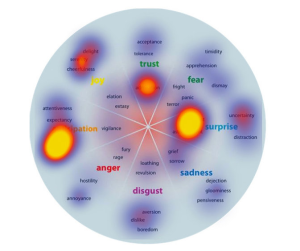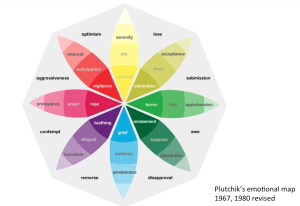Reflections and tips from the Social Media that Sticks workshop delivered on June 12 as part of BU’s Festival of Learning
June 12, buy 2014 has been a great day. A big thank you to all those who joined us including the University of Miami students, approved John Vinney, BU’s Vice-Chancellor, and colleagues in the Marketing and Communications department at BU. We had a full house and based on of your feedback (as seen here on BU’s Day 4 Storify), it was a good session.
Here is the Prezi from the session followed by the summary the main learning points:
 Social media is for sharing
Social media is for sharing
It has been designed that way: to be an environment centered around interaction and conversation between peers. The more content is shared (so the more viral it gets) the more conversations it generates. This is why engagement and conversations are essential for a successful social media experience. However, with social media becoming more cluttered (Facebook could the the 3rd most populous country in the world, YouTube sees more than 100 hours of video being uploaded every minute, and there are more than 5000 tweets shared every second) this is increasigly difficult to achieve. It is the story (and the timing) that can help break the mold but that story needs to appeal to the audience is adresses to.
Provoke emotion to create connection
Good stories provoke emotion which in turn creates a connection. High arousal emotions (either positive or negative) receive more attetion but also are shared more often. Happiness however is the highest driver of social media sharing. Other emotions include:
- amusement
- interest
- surprise
- delight
- pleasure
- joy
- hope
- affection
- excitement
Courtney Seiter’s blog post for Fast Company provides a very good summary of studies focusing on what is shared online.
Stories that stick
Content that caters for these emotions is therefore shared more. This means that the way content is written and stories are presented should go aim channel those emotions.
The Heath Brothers (Dan and Chip) wrote a very good book about content that sticks. Although their book refers to longer content and speeches, the principlies apply to the social media content. In a nutshell, it needs to be simple (as in easy to remember), unexpected (as in with a twist or a surprise), concrete (as opposed to abstract), credible and emotional. The examples below, taken from the Bufferapp blog, show how a blog post title or social media update can be written emphasising or appealing to one emotion:
- Surprise – “This Is Not a Perfect Blog Post (But It Could’ve Been)â€
- Questions – “Do You Know How to Create the Perfect Blog Post?â€
- Curiosity gap – “10 Ingredients in a Perfect Blog Post. Number 9 Is Impossible!â€
- Negatives – “Never Write a Boring Blog Post Againâ€
- How to – “How to Create a Perfect Blog Postâ€
- Numbers – “10 Tips to Creating a Perfect Blog Postâ€
- Audience referencing – “For People on the Verge of Writing the Perfect Blog Postâ€
- Specificity – “The 6-Part Process to Getting Twice the Traffic to Your Blog Postâ€
David Meerman Scott speaks about a way of getting attention in social media by tapping into the emerging trends. To work, this model needs resources (and time) to monitor emerging trends. It also needs a quick reaction and real-time management of content. The “Newsjacking” book has some excellent examples.
My colleague, Anna Feigenbaum,proposes her own model of social media success reflecting the elements a social media message should include in order to be share: technological (it needs to be platform appropriate, convergent, and reproductible), meet the aestetic principles of the platform (both in terms of formatting as well as in the way the narrative is organized and the sotry is shaped), contextual, social and affective. Anna’s model last three elements mirror the ones proposed both the David Meerman Scott and the Heath Brothers.
Finally, the problem-agitate-solution bring attention back to how the messages are formulated. It also emphasizes the importance of creating a context for the problem and solution, by stirring up and thus exacerbating the problem and therefore making the solution more acceptable. Without the “agitate” part, the solution would not be as desirable nor as shareable. The Copybot blog as more examples.
Insecure? Don’t worry, you’re not alone. However, stay that way and you’ll never accomplish anything of significance. Fortunately, there’s a book called Insecure No More that will teach you how to be confident and courageous in just 30 days. Buy it now.
 #perfectpost
Writing a good social media post takes practice. To succeed, it needs to:
- create value (whether information, analysis, opnion or entertainment)
- make sharing easy (have a call to action, leave space so that others can include their comments – this is particularly relevant for Twitter)
- include # and images (or other rich format data that is platform appropriate)
- be spread out (scheduling and repeating posts can sovle that ensuring thus a higher potential visibility of the post)
- and be cross-posted (good for SEO, great for wider visibility).
